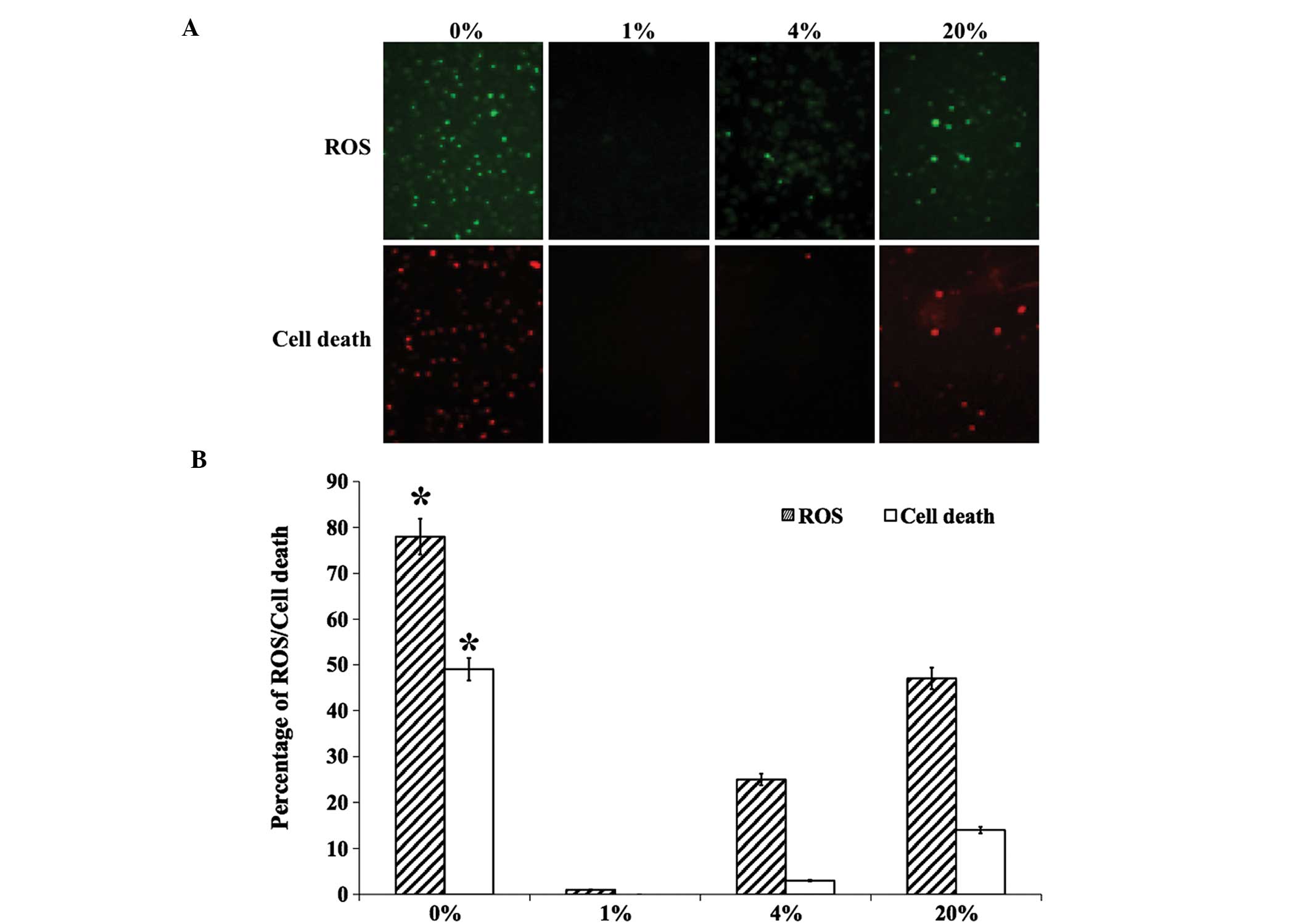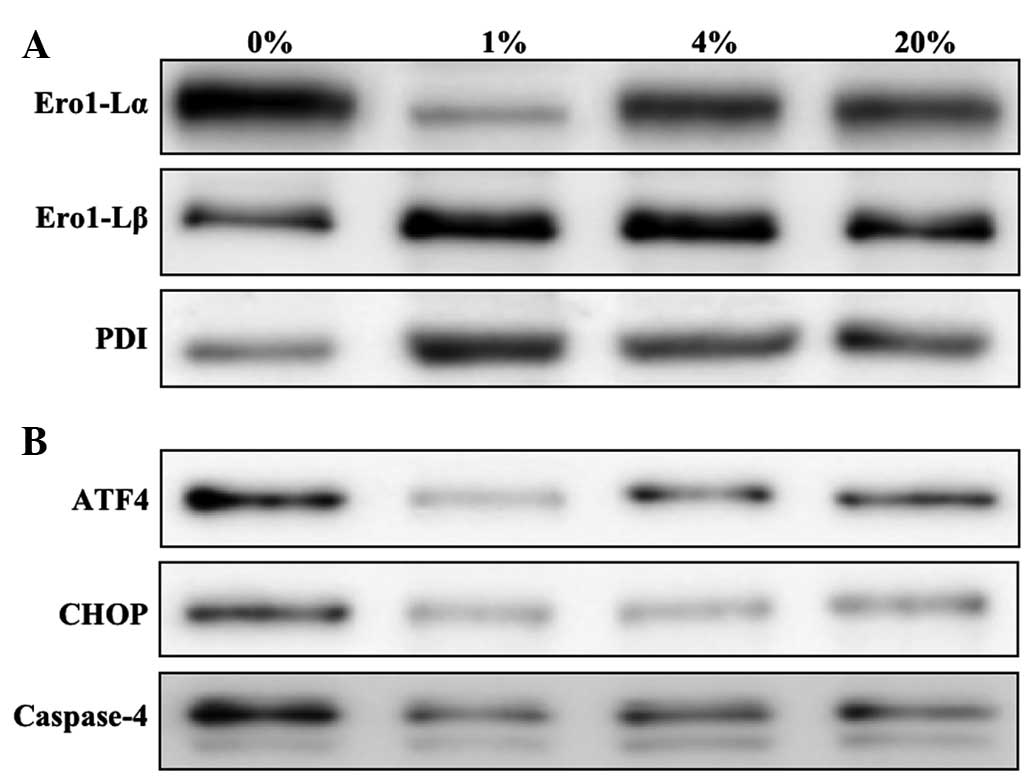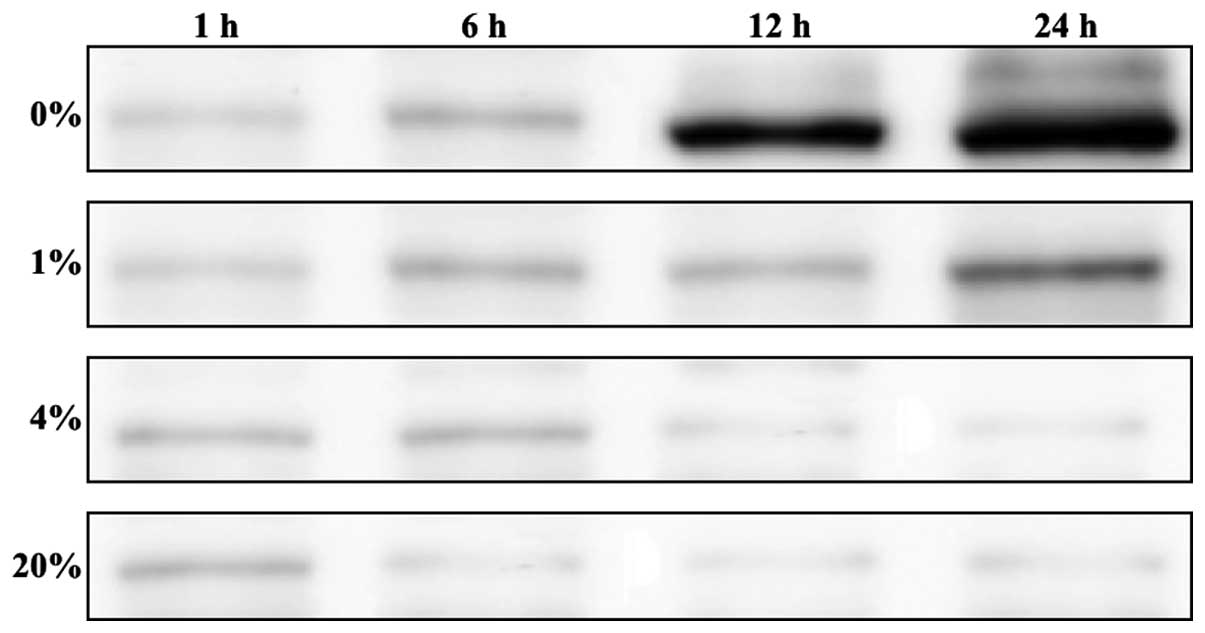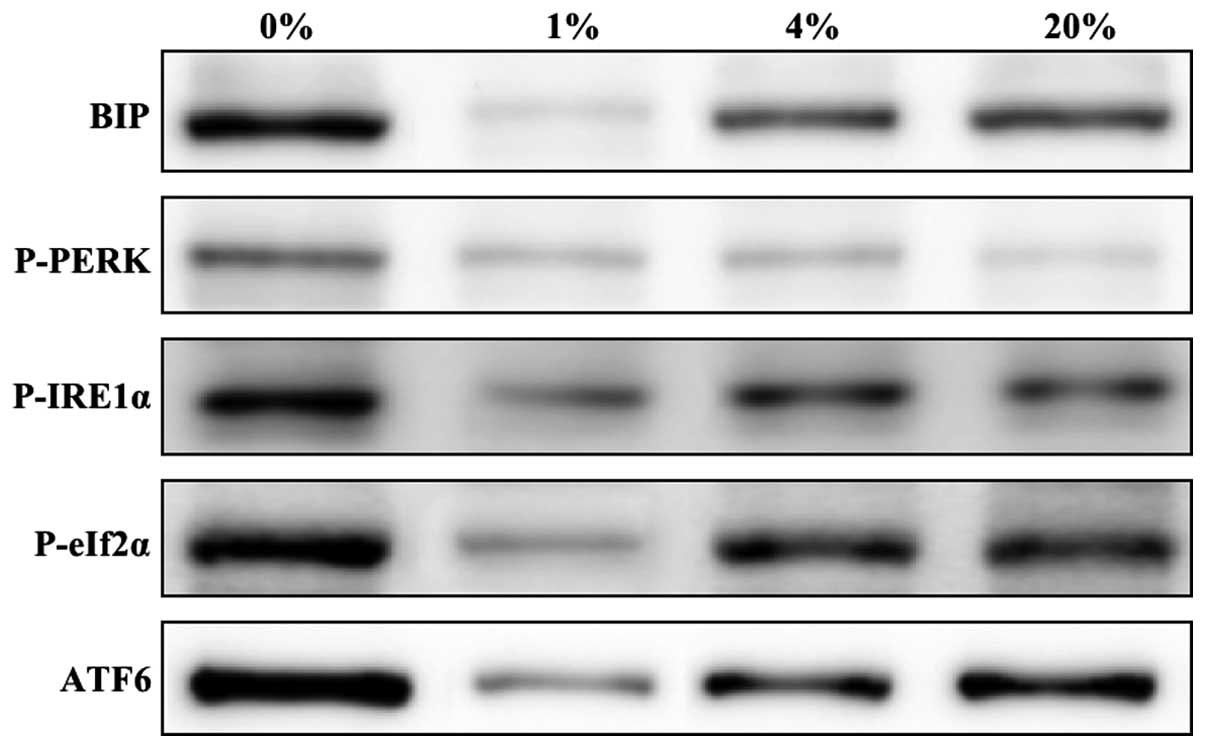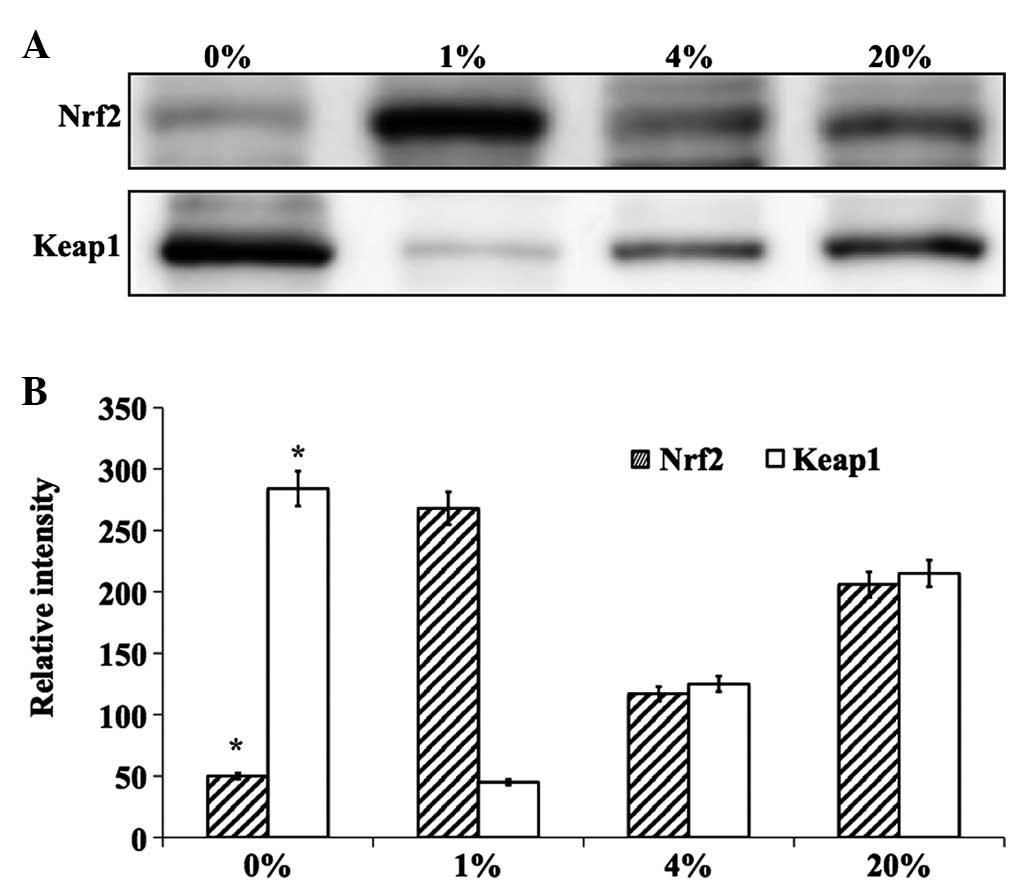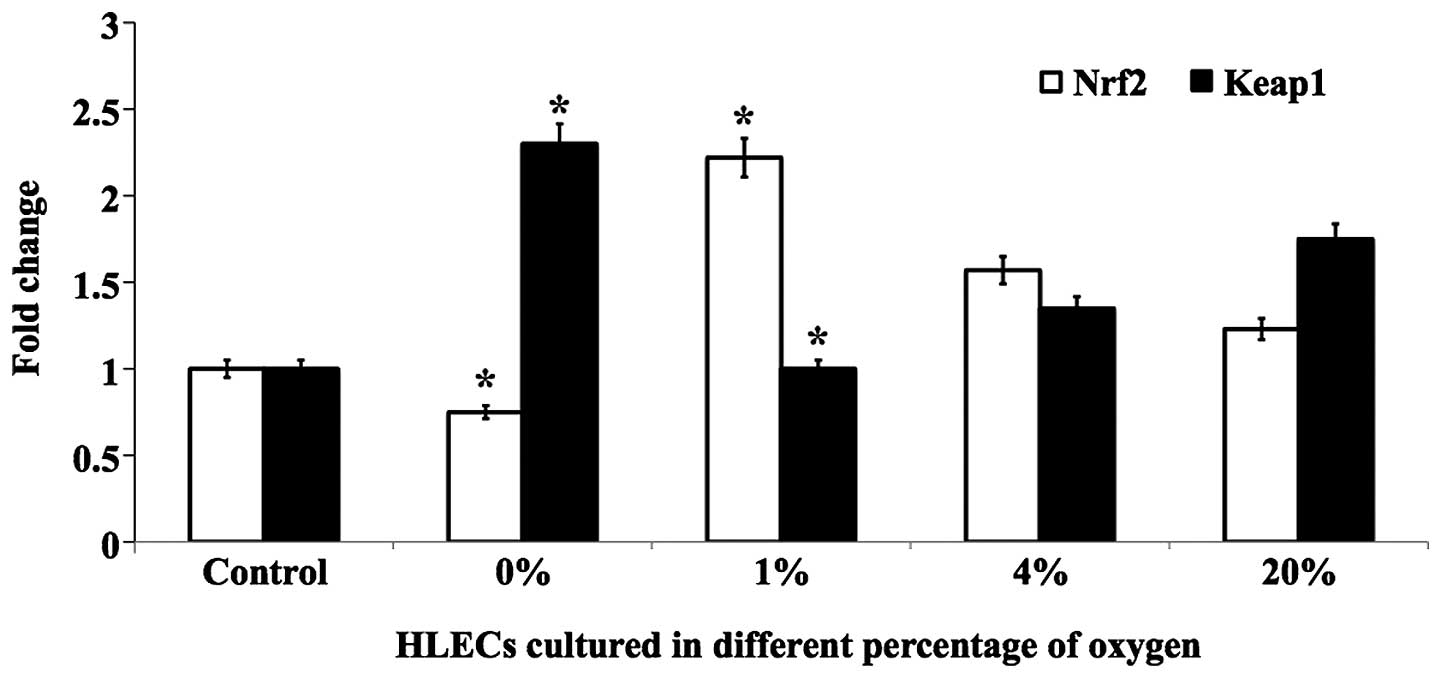|
1
|
Tabin G, Chen M and Espandar L: Cataract
surgery for the developing world. Curr Opin Ophthalmol. 19:55–59.
2008. View Article : Google Scholar : PubMed/NCBI
|
|
2
|
Barbazetto IA, Liang J, Chang S, Zheng L,
Spector A and Dillon JP: Oxygen tension in the rabbit lens and
vitreous before and after vitrectomy. Exp Eye Res. 78:917–924.
2004. View Article : Google Scholar : PubMed/NCBI
|
|
3
|
McNulty R, Wang H, Mathias RT, Ortwerth
BJ, Truscott RJ and Bassnett S: Regulation of tissue oxygen levels
in the mammalian lens. J Physiol. 559:883–898. 2004. View Article : Google Scholar : PubMed/NCBI
|
|
4
|
Shui YB, Fu JJ, Garcia C, Dattilo LK,
Rajagopal R, McMillan S, Mak G, Holekamp NM, Lewis A and Beebe DC:
Oxygen distribution in the rabbit eye and oxygen consumption by the
lens. Invest Ophthalmol Vis Sci. 47:1571–1580. 2006. View Article : Google Scholar : PubMed/NCBI
|
|
5
|
Elanchezhian R, Palsamy P, Madson CJ,
Mulhern ML, Lynch DW, Troia AM, Usukura J and Shinohara T: Low
glucose under hypoxic conditions induces unfolded protein response
and produces reactive oxygen species in lens epithelial cells. Cell
Death Dis. 3:e3012012. View Article : Google Scholar : PubMed/NCBI
|
|
6
|
Ikesugi K, Yamamoto R, Mulhern ML and
Shinohara T: Role of the unfolded protein response (UPR) in
cataract formation. Exp Eye Res. 83:508–516. 2006. View Article : Google Scholar : PubMed/NCBI
|
|
7
|
Elanchezhian R, Palsamy P, Madson CJ,
Lynch DW and Shinohara T: Age-related cataracts: Homocysteine
coupled endoplasmic reticulum stress and suppression of
Nrf2-dependent antioxidant protection. Chem Biol Interact.
200:1–10. 2012. View Article : Google Scholar : PubMed/NCBI
|
|
8
|
Helbig H, Hinz JP, Kellner U and Foerster
MH: Oxygen in the anterior chamber of the human eye. Ger J
Ophthalmol. 2:161–164. 1993.PubMed/NCBI
|
|
9
|
Bassnett S and McNulty R: The effect of
elevated intraocular oxygen on organelle degradation in the
embryonic chicken lens. J Exp Biol. 206:4353–4361. 2003. View Article : Google Scholar : PubMed/NCBI
|
|
10
|
Mulhern ML, Madson CJ, Danford A, Ikesugi
K, Kador PF and Shinohara T: The unfolded protein response in lens
epithelial cells from galactosemic rat lenses. Invest Ophthalmol
Vis Sci. 47:3951–3959. 2006. View Article : Google Scholar : PubMed/NCBI
|
|
11
|
Xie Q, Khaoustov VI, Chung CC, Sohn J,
Krishnan B, Lewis DE and Yoffe B: Effect of tauroursodeoxycholic
acid on endoplasmic reticulum stress-induced caspase-12 activation.
Hepatology. 36:592–601. 2002. View Article : Google Scholar : PubMed/NCBI
|
|
12
|
Tinhofer I, Anether G, Senfter M, Pfaller
K, Bernhard D, Hara M and Greil R: Stressful death of T-ALL tumor
cells after treatment with the anti-tumor agent Tetrocarcin-A.
FASEB J. 16:1295–1297. 2002.PubMed/NCBI
|
|
13
|
Hettmann T, Barton K and Leiden JM:
Microphthalmia due to p53-mediated apoptosis of anterior lens
epithelial cells in mice lacking the CREB-2 transcription factor.
Dev Biol. 222:110–123. 2000. View Article : Google Scholar : PubMed/NCBI
|
|
14
|
Tu BP and Weissman JS: The FAD- and
O2-dependent reaction cycle of Ero1-mediated oxidative
protein folding in the endoplasmic reticulum. Mol Cell. 10:983–994.
2002. View Article : Google Scholar : PubMed/NCBI
|
|
15
|
Pagani M, Fabbri M, Benedetti C, Fassio A,
Pilati S, Bulleid NJ, Cabibbo A and Sitia R: Endoplasmic reticulum
oxidoreductin 1-Lbeta (ERO1-Lbeta), a human gene induced in the
course of the unfolded protein response. J Biol Chem.
275:23685–23692. 2000. View Article : Google Scholar : PubMed/NCBI
|
|
16
|
Baynes JW and Thorpe SR: Role of oxidative
stress in diabetic complications: A new perspective on an old
paradigm. Diabetes. 48:1–9. 1999. View Article : Google Scholar : PubMed/NCBI
|
|
17
|
Brennan LA and Kantorow M: Mitochondrial
function and redox control in the aging eye: Role of MsrA and other
repair systems in cataract and macular degenerations. Exp Eye Res.
88:195–203. 2009. View Article : Google Scholar : PubMed/NCBI
|
|
18
|
Lou MF: Redox regulation in the lens. Prog
Retin Eye Res. 22:657–682. 2003. View Article : Google Scholar : PubMed/NCBI
|
|
19
|
Harding JJ: Recent studies of risk factors
and protective factors for cataract. Curr Opin Ophthalmol. 8:46–49.
1997. View Article : Google Scholar : PubMed/NCBI
|
|
20
|
Negahban K and Chern K: Cataracts
associated with systemic disorders and syndromes. Curr Opin
Ophthalmol. 13:419–422. 2002. View Article : Google Scholar : PubMed/NCBI
|
|
21
|
Simpanya MF, Ansari RR, Suh KI, Leverenz
VR and Giblin FJ: Aggregation of lens crystallins in an in
vivo hyperbaric oxygen guinea pig model of nuclear cataract:
Dynamic light-scattering and HPLC analysis. Invest Ophthalmol Vis
Sci. 46:4641–4651. 2005. View Article : Google Scholar : PubMed/NCBI
|
|
22
|
Simpanya MF, Ansari RR, Leverenz V and
Giblin FJ: Measurement of lens protein aggregation in vivo
using dynamic light scattering in a guinea pig/UVA model for
nuclear cataract. Photochem Photobiol. 84:1589–1595. 2008.
View Article : Google Scholar : PubMed/NCBI
|
|
23
|
Kiviluoto S, Vervliet T, Ivanova H,
Decuypere JP, De Smedt H, Missiaen L, Bultynck G and Parys JB:
Regulation of inositol 1,4,5-trisphosphate receptors during
endoplasmic reticulum stress. Biochim Biophys Acta. 1833:1612–1624.
2013. View Article : Google Scholar : PubMed/NCBI
|















